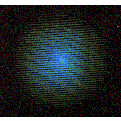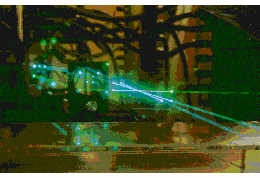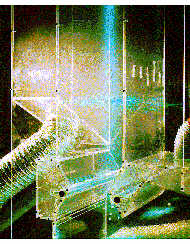Laser Doppler Anemometry
In recent years the Laser Doppler Anemometry (LDA) has become one of the quickest and most efficient technique to determine velocities and characteristic parameters of turbulent flow fields. The operational requirements for applying this non-intrusive measurement technology imply both an adequate optical access to the furnace and the existence of an sufficient amount of small particles along with the flow. This seeding needs to incorporate two major characteristics, which are inertial influences to the flow and no relative slippage between the particle and the fluid flow. For each direction to be mapped two laser beams of specific wave length are merged inside the focal point of a convex lens forming the measuring volume. Through the specific frequency shift of both laser beams a pattern of fringes inside this volume is formed. If a reflective or refractive particle traverses this volume, it scatters the laser beams with a special frequency that is directly proportional to the distance between the fringes, the geometry of the laser setup and the velocity of the particle. This frequency is detected by the widely used back-scatter mode and transformed into the velocity. The measured signals, which minimal amount is dependent to the complexity of the flow configuration, lead to average velocities, their standard deviations and other turbulent parameters. The LDA method may flexibly be applied, provides for a high spatial and temporal resolution and does not incorporate the need for calibration for recording characteristics of reversing flows.

Fringes in the LDA-measurement volume

LDA-measurement in the model of glas melting furnance

LDA-measurement in the model of glas melting furnance of the MVA Hamm


